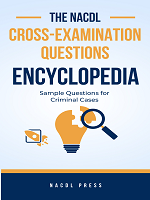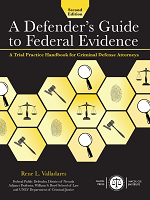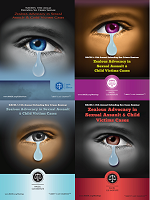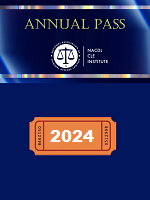Access to The Champion archive is one of many exclusive member benefits. It’s normally restricted to just NACDL members. However, this content, and others like it, is available to everyone in order to educate the public on why criminal justice reform is a necessity.
The first postconviction exoneration as a result of DNA testing occurred in 1989. Gary Dodson was convicted of rape in Illinois, based primarily upon the alleged victim’s testimony. She later recanted and stated that she had made up the accusation to conceal consensual intercourse with her boyfriend. DNA testing excluded Dodson as the source of the semen recovered from her body and could not exclude her boyfriend as the donor.1
The postconviction review of the testimony in the Dodson case revealed another troubling factor that may have contributed to the wrongful conviction. The state’s forensic analyst had testified that both Dodson and the semen donor had Type B blood. The analyst correctly told the jury that Type B blood is shared by only 11 percent of Caucasians. The problem was that the analyst did not inform the jury that the victim also had Type B blood and her body fluids were mixed in the tested sample. The Type B components found in the sample could have been entirely hers. The genetic markers from the semen could have been masked by hers, meaning that no genetic information was obtained about the donor. Thus, the proper interpretation of the test was that any male could have been the donor.
According to the Innocence Project website, about 330 people have now been exonerated in the United States as a result of postconviction DNA testing.2 All of those exonerated have lost a substantial, irreplaceable part of their lives. The Innocence Project analyzes the factors that contributed to each wrongful conviction for the same reasons that the National Transportation Safety Board analyzes aviation crash data — to find the causes so that future tragedies can be prevented.
In its analysis of the causes of the first 325 wrongful convictions ultimately overturned by postconviction DNA testing, the Innocence Project determined that 47 percent (154 cases) involved invalid forensic science. Behind eyewitness misidentification at 72 percent, improper scientific testimony was the second biggest contributor to wrongful convictions.3
Scientific testimony may prove to be invalid because the underlying technique has never been validated by subjecting it to sufficient scientific evaluation as with bite mark evidence, firearm tool mark analysis, shoe print analysis, and other “pattern comparison” procedures. Properly validated procedures may nonetheless be presented in a misleading way if the test was improperly conducted or interpreted to the jury in a misleading way. Such was the case in Gary Dodson’s trial. Serology has been properly scientifically validated and it has been calculated using proper statistical methods that 11 percent of the Caucasian population has Type B blood. However, the omission by the analyst in his testimony that the alleged victim also had Type B blood rendered the result of the testing misleading. His testimony conveyed that because Dodson had Type B blood, he could not be excluded as the donor of the semen while 89 percent of the Caucasian population could be excluded. Had the results of testing been properly interpreted to the jury, it would have had no probative value since the test didn’t exclude any male.
The contribution of faulty forensic science to wrongful convictions is both old news and a breaking story. From the first exoneration in 1989, to the most recent at this writing, that of Steven Mark Cheney, where the “science” of bite marks was the culprit,4 bad science has been exposed as a major factor in wrongful convictions. The problem is that the effort to correct this eminently fixable deficiency before additional wrongful convictions result has progressed at a snail’s pace and may not be sufficient to adequately accomplish the task.
In 2009, at the direction of Congress, the National Academy of Sciences produced its now well-known report, the shortened title of which is “Strengthening Forensic Science in the United States: A Path Forward.”5 In summary, the report describes the state of forensic science in the courtroom to be a mess. With respect to the scientific techniques utilized, it determined that many forensic tests, such as those used to indicate the source of bite marks and tool marks, have never been exposed to appropriate scientific scrutiny. The report also describes problems with improper interpretation of test results by unqualified or biased experts. Also among issues identified by the report is the inherent problem of having most forensic laboratories controlled by or lacking independence from law enforcement.
The specific findings of this comprehensive report are too detailed and voluminous to do justice in this short column. But, it suffices to say that testimony and evidence from forensic experts often falls short of “science” as that term is understood in the broader scientific community. Among the numerous recommendations of the NAS report were that (1) rigorous systematic research be done to “validate the basic premises and techniques in a number of forensic science disciplines”; (2) all public forensic laboratories be removed from the administrative control of law enforcement agencies or prosecutors’ offices; and (3) a federal agency be created to set national standards for forensic sciences and enforce those standards as well as to stimulate basic and applied research. NACDL issued a report, “Principles and Recommendations to Strengthen Forensic Evidence and Its Presentation in the Courtroom,” which adopted and expanded upon the NAS report’s recommendations.6
In response to the NAS report, the federal government in 2013 established in the Department of Justice the National Commission on Forensic Science. The Commission’s charter states its objectives and scope of activities to include “provid[ing] recommendations and advice to the Department of Justice concerning national methods and strategies for strengthening the validity and reliability of the forensic sciences.” The Commission is collaborating with the National Institute of Standards and Technology (NIST). NIST’s Organization of Scientific Area Committees (OSAC) will aid the Commission in establishing “voluntary consensus standards” forensic practitioners.
While the establishment of the Commission is laudable, it falls short of the recommendations of the NAS report and those of NACDL. Both recommend the establishment of a “science-based federal agency” that is not part of the Department of Justice or any other agency “whose primary mission involves prosecution or law enforcement.” Further, both recommend mandatory accreditation of forensic laboratories and forensic practitioners. NACDL’s report states as part of its principles for reform that “the results of any forensic theory or technique whose validity, limitations, and measures of uncertainty have not been established should not be admitted into evidence to prove the guilt of an accused person.” The Commission’s charter does not indicate that it will take that position.
Whether the science-based independent agency recommended by NAS and NACDL had been implemented or the reform task has been undertaken by the Commission, reaching the ultimate goal of eliminating bad science from the courtroom is a long way away if the courts continue to admit demonstrably faulty forensic evidence at trial. Agencies or commissions move slowly. It will take years for the process currently underway to play out. However, in every trial the admissibility of the scientific evidence can be raised and there is the opportunity for the court to disallow forensic evidence that has not been shown to be reliable and to properly limit an expert’s interpretation of good science to the jury.
However, it seems that bad science continues to be admitted in trial with no other explanation than that we have always done it. Perhaps there is no better example of this than bite mark evidence. The NAS report stated that “no scientific studies support” the proposition “that bite marks can demonstrate sufficient detail for positive identification” and, that “[s]ome research is warranted in order to identify the circumstances within which the methods of forensic odontology can provide probative value.”7 The expert who testified in Steven Mark Cheney’s case that the bite marks on the victim were a one in a million match to Cheney submitted an affidavit in the postconviction proceeding stating that “conclusions that a particular individual is the biter and their dentition is a match when you are dealing with an open population are now understood to be scientifically unsound.” The history of the fallibility of bite mark evidence is well documented.8 Yet in 2014, a judge ruled the evidence admissible in a New York City murder case, State v. Dean. This case is another in the long line of cases allowing the evidence, basically because it was allowed in other cases.9
Now even the White House has joined in the condemnation of this evidence. In July of this year, Jo Handelsman, the assistant director of the White House Office of Science and Technology Policy, called for the “eradication of bite mark evidence, stating that it lacks scientific foundation.10
Will the shift from the “general acceptance in the scientific community” Frye11 standard to the “gatekeeper” function imposed on the courts by Daubert12 make a difference? One study indicates that when states shift from the Frye standard to the Daubert standard, things pretty much remain the same as far as the scrutiny to which scientific evidence is subjected by the courts.13
Efforts such as those of the Commission to change forensic science practices are by their nature slow moving. The most immediate remedy for the problem with inaccurate science in the courtroom could come from the courts. If the experience with bite mark evidence is any indication, the courts aren’t taking the role that they should. As NACDL recommends in its report, admissibility rules should be changed to require validation of the science and certification of the testifying expert where the evidence is used to prove the guilt of an accused.
Notes
- See Brandon L. Garrett & Peter J. Neufeld, Invalid Forensic Science Testimony and Wrongful Convictions, 95 Va. L. Rev. 1 (2009).
- Go to http://www.innocenceproject.org/cases-false-imprisonment.
- Seehttp://www.innocenceproject.org/causes-wrongful-conviction.
- Read more at https://www.washingtonpost.com/news/morning-mix/wp/2015/10/13/texas-mans-conviction-overturned-after-bite-mark-evidence-discredited.
- See Comm. on Identifying the Needs of the Forensic Science Cmty., Nat’l Research Council of the Nat’l Acads., Strengthening Forensic Science in the United States:A Path Forward [hereinafter NAS Report] (2009).
- The NACDL report is availble at http://www.nacdl.org/reports/forensics.
- NAS Report at 5-37.
- See http://www.innocenceproject.org/news-events-exonerations/bite-mark-evidence-deemed-unreliable; see also Radley Balko’s four-part series in his Washington Post Blog, “The Watch,” extensively examining the problems with bite mark evidence.
- For a discussion of prior cases and the reasons for admissibility of this evidence, see Part II of Radley Balko’s four-part series, available at https://www.washingtonpost.com/news/the-watch/wp/2015/02/17/it-literally-started-with-a-witch-hunt-a-history-of-bite-mark-evidence.
- See http://law.scu.edu/northern-california-innocence-project/high-ranking-obama-official-calls-for-eradication-of-bite-mark-evidence.
- Frye v. United States, 293 F. 1013 (D.C. Cir. 1923).
- Daubert v. Merrell Dow Pharmaceuticals, 509 U.S. 579 (1994).
- See Edward K. Cheng & Albert H. Yoon, Does Frye or Daubert Matter? A Study of Scientific Admissibility Standards, 91 Va. L. Rev. 471 (2005).
About the Author
A certified criminal law specialist, E.G. “Gerry” Morris has been practicing criminal defense law for 37 years. His practice focuses primarily on trials in state and federal courts, but he also handles state and federal appeals as well as post-judgment actions. He is a frequent lecturer at continuing legal education programs.
E.G. Morris
Law Office of E.G. Morris
2202 Lake Austin Blvd.
Austin, TX 78703
512-478-0758
Fax 877-497-8347
egm@egmlaw.com






